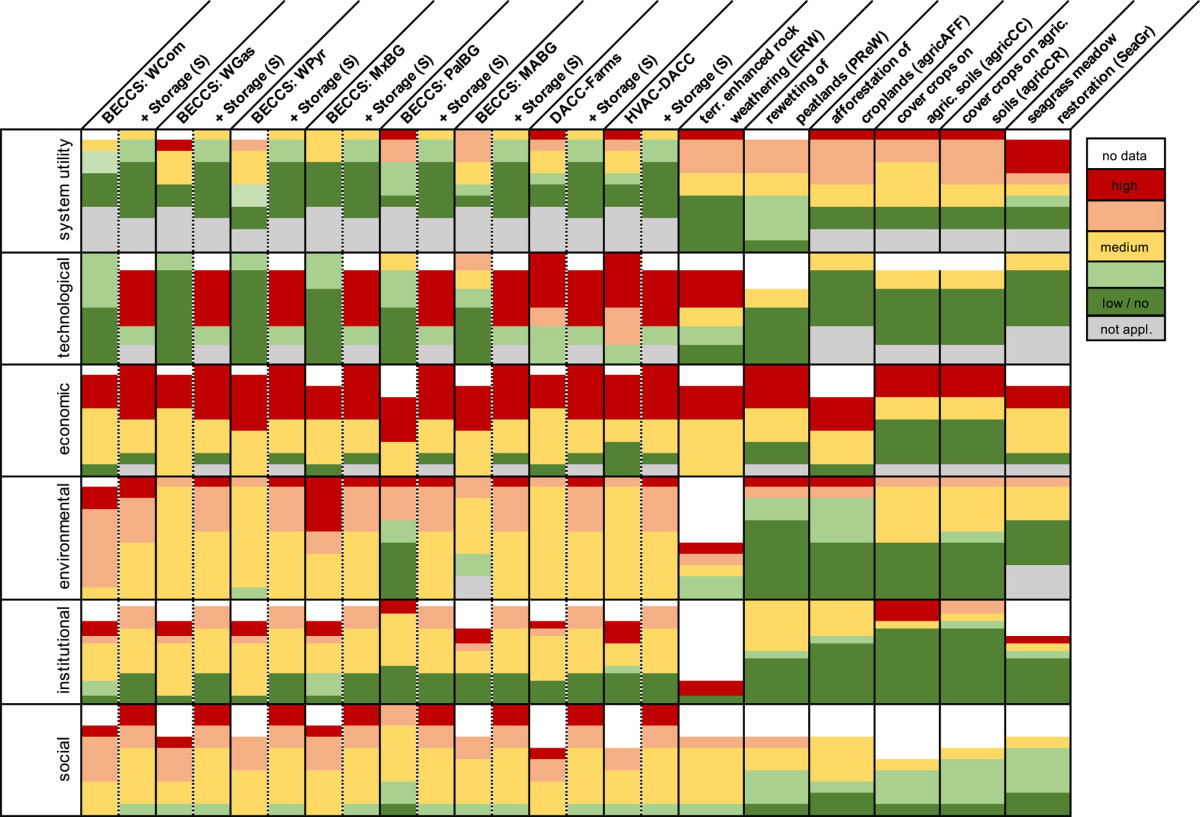High hurdles for technological CO2 removal measures in Germany – researchers
Clean Energy Wire
Technological measures to remove carbon dioxide from the atmosphere face significant economic and institutional hurdles in Germany said a research team led by the Helmholtz Centre for Environmental Research (UFZ) and the GEOMAR Helmholtz Centre for Ocean Research Kiel. The country must employ ecosystem-based measures, such as the restoration of seagrass meadows, the rewetting of peatlands and the reforestation of degraded land, the researchers said. However, Germany "is quite restricted in terms of area and because we cannot rewet peatlands or reforest large areas indefinitely," co-author Johannes Förster said. Technological solutions that significantly increase the country's CO2 removal potential therefore must play a part in an effective removal strategy, the researchers said.
Measures with a higher CO2 removal potential, such as using bioenergy and permanently storing CO2 (BECCS - Bioenergy with carbon capture and storage), could deal with up to 60 percent of Germany's residual emissions, the researchers found. However, these come with high environmental impacts, are costly and often compete for the same resources. Capturing CO2 directly from the air and storing it (DACCS), on the other hand, is not yet a mature technology. A key issue, however, is permanent storage, the researchers said. Public opposition, a lacking regulatory framework and costs present significant hurdles, they argued. The researchers presented a traffic light colour system to rate the regulatory status of removal options, with red indicating that the hurdles to introducing a carbon dioxide removal (CDR) measure are high in a certain area (e.g. ecological or economic), yellow meaning they are at a medium level, and green showing that they are low for this option.
The European Union and Germany have begun to look beyond pure emissions reduction to reach climate neutrality by 2050. Getting to a net-zero economy means the EU will have to capture emissions from certain industrial processes and store them underground (CCS - Carbon capture and storage), but also tackle residual emissions – for example in livestock farming – by removing an equivalent amount from the atmosphere. This could happen through nature-based methods, such as reforestation, or technological solutions, like direct air capture (DAC).


